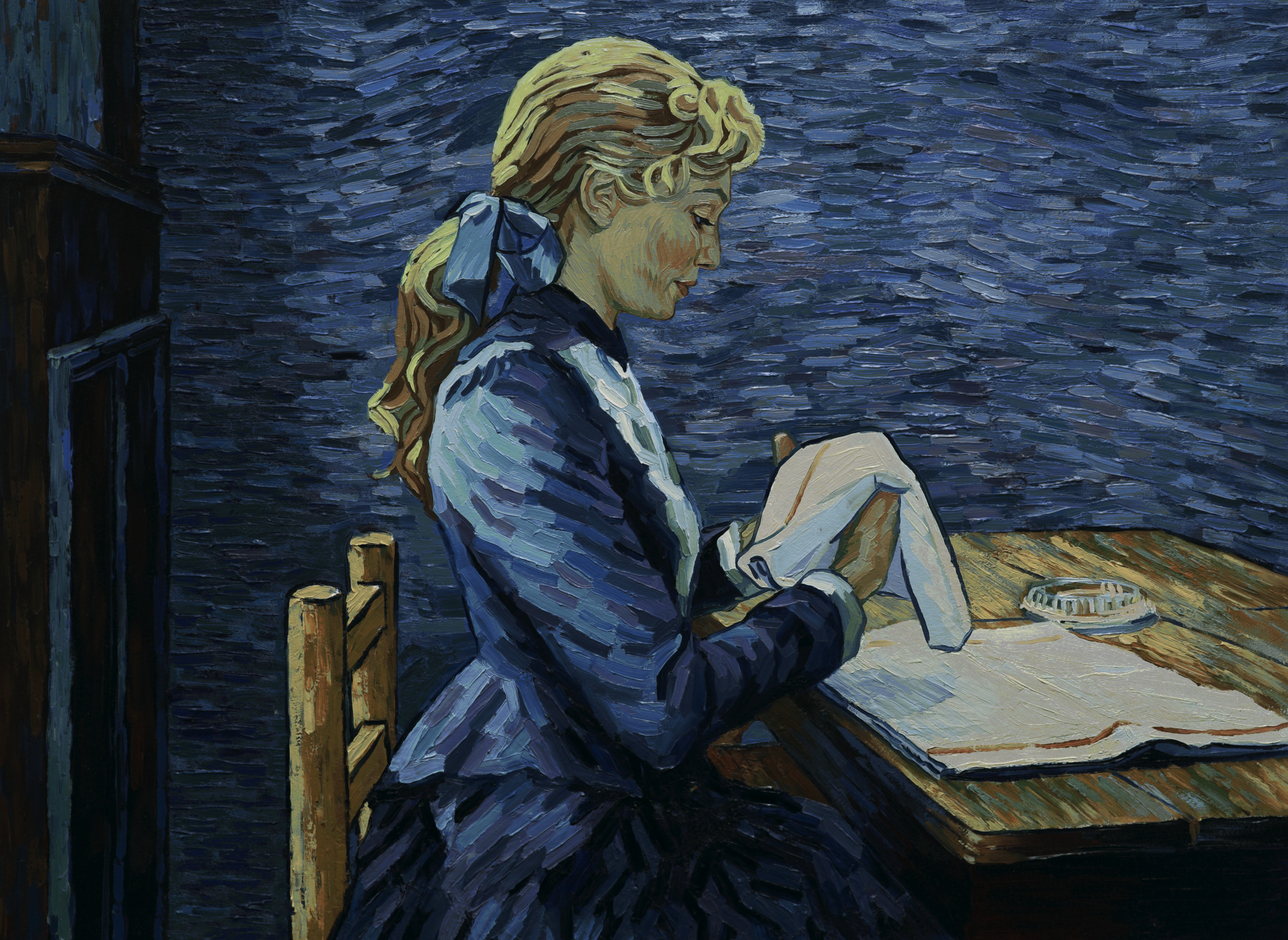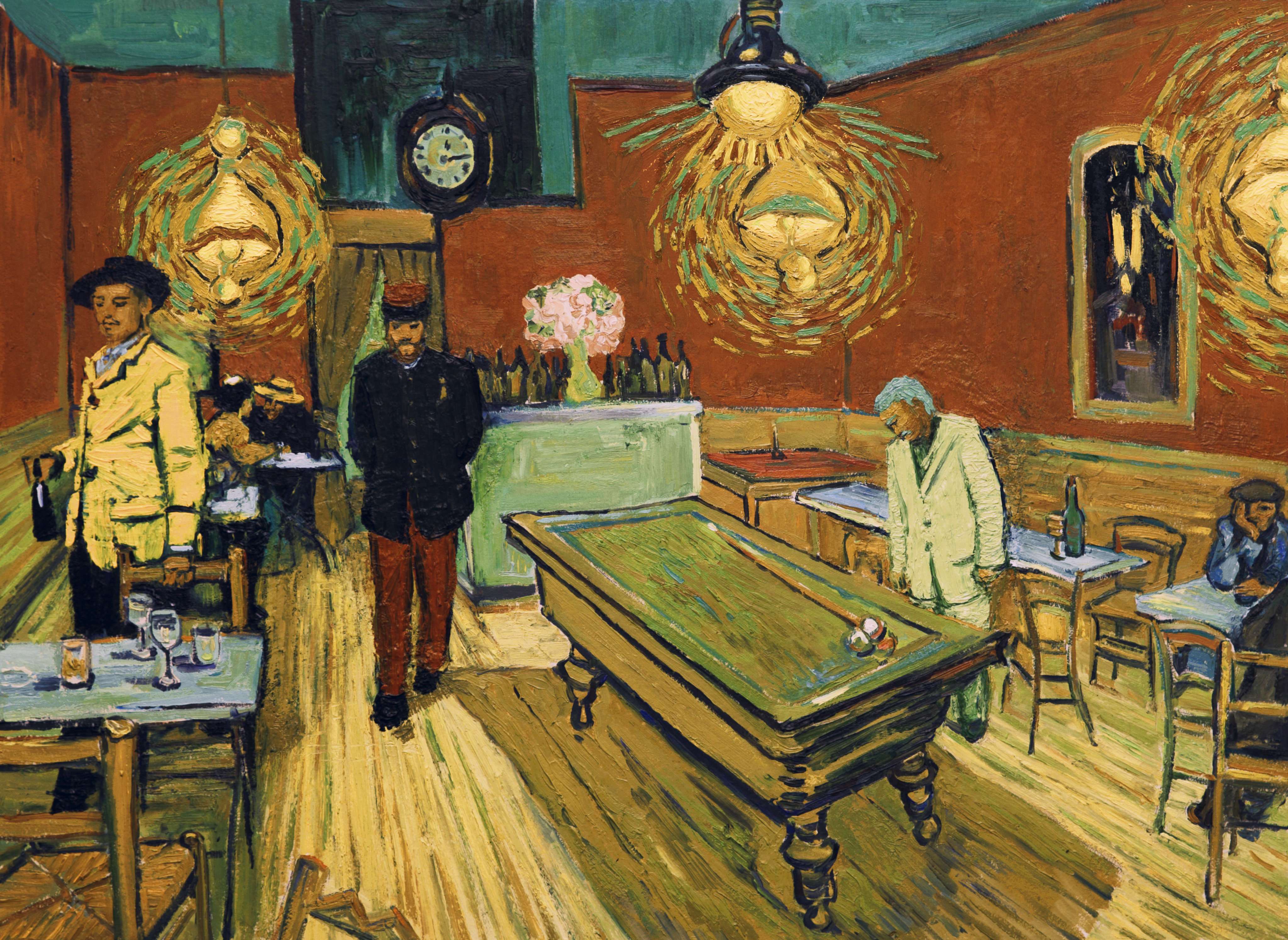Good Deed Entertainment. 2017. Animation. 97 Minutes.
2.5 Angels
Directed by Dorota Kobiela and Hugh Welchman, the new animated feature film “Loving Vincent” is many things at once: A crime of cinematic passion, a daring attempt at replicating a famed artist’s visionary style in animated form, and a somewhat plodding detective story told in wheezy old narrative tropes that violate an often ravishing technique.
Imagine a modest 1940s noir murder mystery hand painted by Vincent Van Gogh, and then stop imagining, because that’s basically what you get. According to its makers, this is the first feature film entirely hand-painted in oils — some 65,000 canvases, created by a team of 115 artists, all working in Van Gogh’s style.
Every noir needs a cadaver or two, and Loving Vincent is no exception. The corpse under investigation belongs to Van Gogh himself, who left behind a letter when he died which Armand Roulin (played by Douglas Booth, looking distractingly like a sketch of Johnny Depp in Ed Wood) is honor bound to deliver. Armand becomes gradually obsessed by the manner of Van Gogh’s death. He begins to interview Van Gogh’s last known associates, including a squandered Saoirse Riordan as Margueritte Gachet, Van Gogh’s possible love interest. What Armand uncovers shakes his belief in the official story–and is supposed to shake ours.
The “what if?” in this whodunit is based on rumors that Van Gogh was actually murdered (or accidentally shot by pranksters) rather than famously suiciding in that wheat field at Auvers. A witty touch in a script otherwise eschewing humor is that most of the main characters are people Van Gogh painted, including his therapist, his mailman, the supplier of his paints, his innkeeper and on and on. This would appear to be the peg on which the use of Van Gogh’s visual style hangs, albeit shakily. His tremulous, pulsating surrealism would have died with him, and it’s oddly mated to the kind of mundane, expository
conversations found in TV police procedurals.

Like Richard Linklater’s Waking Life and Tower, Loving Vincent is part of a new wave of rotoscoped animation. The cast was filmed playing scenes in costume, with those scenes then painted onto backgrounds done in Van Gogh’s bristling style. But the essential realism of the foreground figures clashes with the freer hand given the artists on the often beautiful and expressive backgrounds. The effect is frequently of standing in a gallery while a bunch of gabby tourists block your view of the masterpieces.
Only in a brief dream sequence do the two visual styles truly click. Armand imagines himself to be the dying Van Gogh, sleeping in Van Gogh’s last bed, and the rabid colors and brutal but dreamy brushstrokes suddenly make sense, paired with the workings of a subconscious mind.
For all its mixed accomplishments, Loving Vincent is still worth seeing. This is a movie by two obsessives, attempting to break animation out of the dismal rut of the Disney/Pixar/Blue Sky/Illumination industrial complex. It’s a film that gets an “A” for effort, though one compromised by a C+ for storytelling. See it the way you’d see a surrealist painting — for its physical beauty, rather than because it makes sense.


